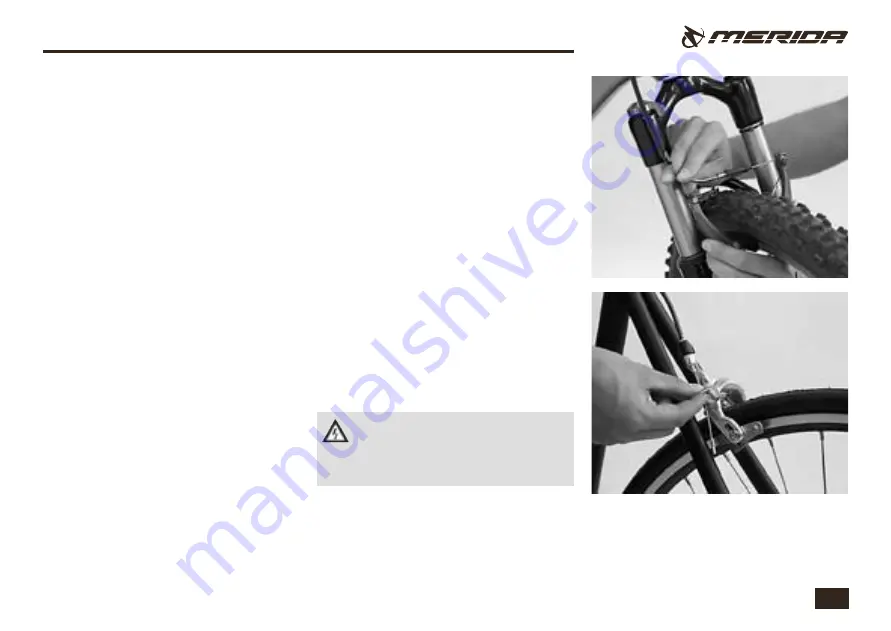
66
. The wheels
.. Mounting wheels
To mount a wheel, follow the reverse proce-
dure of wheel dismounting. Make sure the
wheel is correctly seated in the dropouts and
accurately centred between the legs of the
fork or seat and chain stays.
Make sure the quick-release and the drop-out
catches are correctly seated.
If you have V-brakes, make sure you immedi-
ately connect the brake cable again!
With U-brakes make sure the drop-out
catches are correctly seated. Inflate the tire
again, if it has been deflated for dismount-
ing/mounting.
In the case of racing brakes close the cam
lever.
In the case of multi-speed hubs of city bikes
check that all the relevant components are
properly mounted. Tension the chain before
tightening the wheel nuts by pulling the wheel
rearwards. You should not be able to move
the chain more than two centimetres up and
downwards. On no account should the chain
sag! Fasten the coaster brake bracket again.
If you have disc brakes, check whether the
brake pads rest snugly in their seats in the
brake caliper. This is the case when the gap
between the pads is parallel and when the
wear indicators are in the allocated spots.
Make sure you push the brake disc between
the brake pads.
After mounting the wheel and tightening the
quick-releases, pull the brake lever and spin
the wheel afterwards. The brake disc should
not drag on the brake caliper or on the brake
pads as a rule.
Check whether the brake pads hit their brak-
ing surfaces. Make sure the wheel is cor-
rectly and firmly fixed in the drop-outs and
the coaster brake bracket, if there is one, is
properly mounted. Under all circumstances,
make a brake test!
Before riding again, check that you
have not let any grease or other lubri-
cants get on the brake pads or disc while
mounting the wheel.
















































